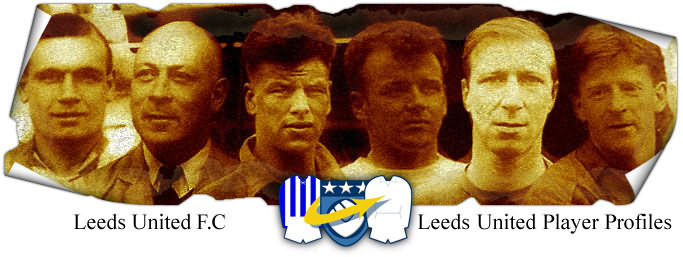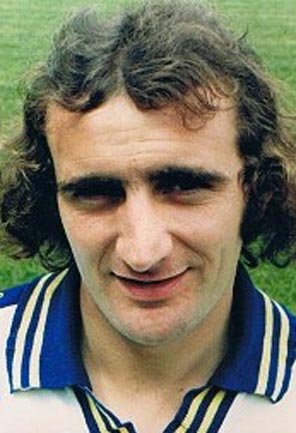

Hird: Kevin
1979-1984
(Player Details)
Right Back/Midfield
Born: Colne: 11-02-1952
Debut: Norwich City (h): 03-03-1979
5’7” 10st 6lb (1979)
A Burnley fan, he attended Lord Street School, Colne and he was picked up by Blackburn
Rovers from school in October 1970 and signed professional in February 1973. He built a
big reputation as an attacking full-back. When Leeds signed him from Rovers for £357,000,
it made him the most expensive full-back in the British game at that time. He played one
hundred and thirty-two times, including three as a substitute, and scored twenty goals for
Rovers. As it turned out Hird spent much of his days at Elland Road as a midfielder, where
his forays down the right owed much to his dribbling skills. At Leeds he netted some
spectacular goals and also took on the responsibility of penalty taker. Known as “Jasper”
to the fans, because of his likeness to comedian Jasper Carrot, he was a bit of an enigma,
capable of both mind-boggling skills and basic errors, but no one could fault him for
effort. He was one of Jimmy Adamson's better buys, but unfortunately for Hird his new
Manager could not decide which was his best position and where to play him. Hird had
attacking instincts and so he was tried on the right wing, where his mazy runs and
dribbling skills and long-range shooting could be of use. He could always be relied upon
to gave 100% no matter where he was selected. He was also selected for the PFA Second
Division Team of the Year in 1978-79. His goals, supplemented by several from the penalty
spot were invaluable to a Leeds attack that found it hard to score and in 1979-80 he was
the club's leading scorer in the League with eight! He personified inconsistency and was
a confidence player who was brilliant one minute and woeful the next, capable of scoring
brilliant goals just as he was of missing sitters. He could be brilliant in training and
yet fail to produce on the pitch where it mattered. He based his game on hard running, no
matter whether at right back or outside right/midfield. His head down and shoulders
hunchedposture did not make for accurate or inspired distribution and his proneness to
being caught out of position and to lose possession because of his willingness to run in
trying to produce goal-scoring chances where only as good as his crosses, if he could get
them into the danger zone. A bit of an enigma, who could take opposition defences by
surprise by the quality of his own finishing, yet doubt his own ability to do so and yet
still have the courage to take on the responsibility of being the team's penalty-taker
with good success. He was still only twenty-nine when he was allowed to move to Burnley
in August 1984 on a free transfer and it seemed John Bond had made a killing when he
scored sixteen League goals in his first season with the Clarets. He made his debut on
11th August 1984, against Blackpool in the Lancashire Cup and his League debut followed
the following week at home to Plymouth Argyle on 25th August 1984. He was selected, in
1985–86, for Football League Fourth Division PFA Team of the Year. He played his final
game for Burnley at Colchester United on 6th May 1986 and stayed at Turf Moor until June
1986, until the club decided they could no longer afford his services. He had scored
twenty-three goals in eighty-three League appearances, and thirty-one goals in one
hundred and four starts and one game from the bench in all competitions, when he gave up
full-time football and began work at a timber merchant’s and also played for North-West
Counties League club, Colne Dynamoes. He joined Colne in the summer of 1986 and in
September 1991 he joined Barnoldswick United after Colne folded. He was spent several
seasons playing for the Amateur Kelbrook Reserves until they disbanded in 2007. He then
spent three seasons at another amateur team, Earby F.C. in the Craven And District league.
Hird still passes on his wealth of experience to youngsters through his coaching school
and Blackburn Rovers' Centre of Excellence. He is a support assistant at a special school
in his birthplace Colne, but he still plays occasionally for the Blackburn Rovers'
Veterans. His son Sam is a Folk Blues Violinist and obtained a classical music degree at
Manchester University. Hird himself is a self-taught Guitarist with a flair as an Artist.